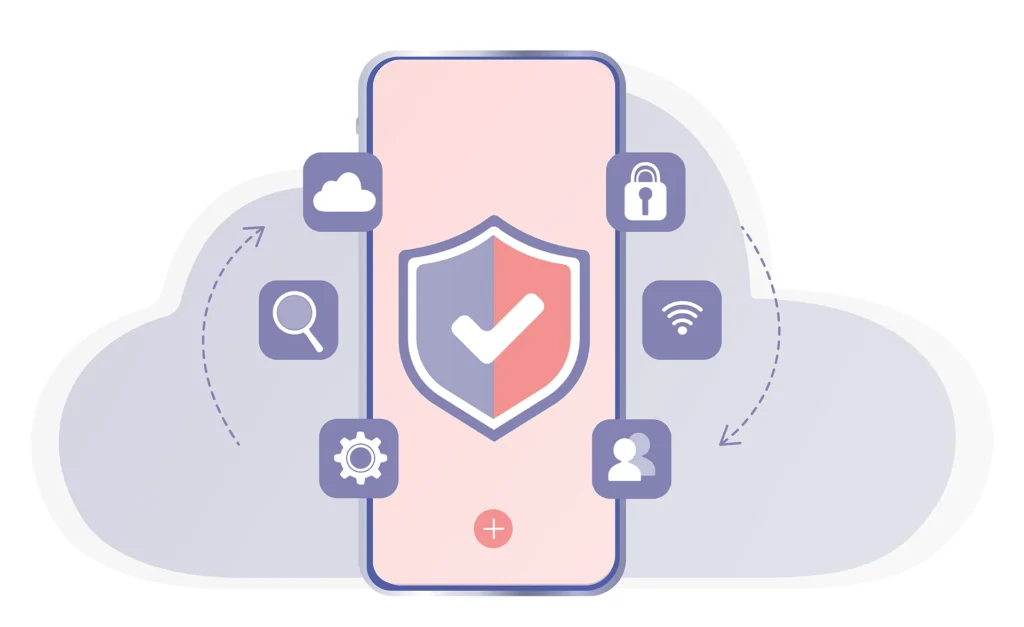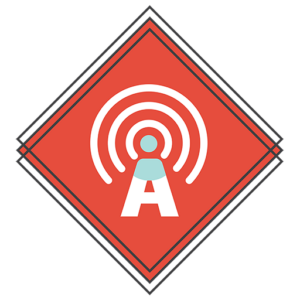
Updated: 17 September, 2025
Universities are tracking attendance more nowadays. The integration of advanced technologies, the need for data-driven decision-making, regulatory requirements, and the evolution of learning models have all contributed to this trend. Tracking student attendance, especially in big classes can be challenging, time consuming, and sometimes inaccurate.
With the help of technology, different tools and learning management systems (LMS), managing attendance has become more streamlined and efficient.
In this blog we will explore how to track attendance using popular LMS platforms such as Canvas, Moodle, and Blackboard. We will also review how to track attendance in Attendance Radar, our AppSec solution to attendance tracking. We will compare systems and discuss best practices to ensure you’re getting the most out of these tools.
Table of Contents
ToggleWhy Track Attendance in a Learning Management System?
Tracking attendance in an LMS offers several advantages over traditional methods. Digital attendance tracking is more efficient and accurate, reducing the chances of human errors and saving time for teachers. With LMS, attendance can be recorded automatically, providing real-time data and reports.
A primary benefit of tracking attendance in a LMS is that it can improve student engagement. Regular attendance tracking ensures students are present and participating, which, as studies have shown, leads to better academic performance.
Data accuracy is another significant advantage of tracking attendance in your LMS. Digital systems can help eliminate any manual errors and ensure attendance records are up-to-date. This data can then be used for analysis and improvement.
Popular LMS platforms like Canvas, Moodle, Blackboard, and Google Classroom offer attendance tracking features. Leveraging these systems can help institutions enhance student engagement, accountability and data accuracy. Below, we will explore each LMS platform in detail, reviewing how to track attendance and the pros and cons of each system.
How to track attendance with Canvas
Canvas is a very widely used LMS designed to streamline online management and enhance learning experience. It offers a range of tools for course management, performance tracking, and student attendance tracking. It operates through a web-based interface, providing students and teachers with access to course materials, assignments, grades, and communication tools.
One of the additional tools Canvas offers is Attendance tracking of students. Teachers can mark the attendance of students through the LMS and it offers various features which are explained below. Additionally, teachers are able to choose whether they would like the attendance of students to be a factor in their grade. They are able to set the importance and points attendance can give.

Quick guide to tracking attendance in Canvas:
-
- Log In: Access your Canvas account and navigate to the course.
-
- Access Roll Call Attendance: Click on "Attendance" from the Course Navigation menu.
-
- Mark Attendance: Use the Roll Call Attendance tool to mark students as present, absent, or late. Click on a student's name to toggle their attendance status.
-
- Generate Reports: Teachers can generate and send attendance reports by email.
Attendance Features in Canvas
-
- Percentage of attendance: Calculates attendance of students by percentage to review how well that student is attending class in a course. Statuses include present and on time, not present, late, and unmarked.
-
- Mobile app: teachers can mark attendance on the go using the Canvas Teacher app.
-
- Teachers can mark students in bulk.
-
- Can track attendance with a seating chart. If your students have assigned seats, there is a view in Canvas which allows you to mark them as present based on where they were seated.
Here is a step-by-step guide on tracking attendance with Canvas.
Pros and Cons of Tracking Attendance with Canvas
Pros:
-
- The roll call attendance tool is built into Canvas, eliminating the need for additional software.
-
- Provides detailed analytics and helps track trends and identifies students at risk of low attendance.
-
- Options to mark students as present, absent, or late.
-
- Integrates with the course calendar to automatically log attendance for scheduled sessions.
-
- Allows for attendance tracking from mobile devices, adding flexibility.
Cons:
-
- Some teachers may require training to use the attendance features effectively.
-
- Canvas requires reliable internet connection for real-time attendance tracking.
-
- Canvas still requires manual input, therefore it is not the most time efficient or easy, especially for bigger classes.
-
- Not the most user friendly or modern interface.
Attendance tracking in Moodle
Moodle is a free and open-source learning management system used for blended learning. It is widely used by organisations to deliver online courses and training programs. It operates through a web-based interface, allowing educators to create and manage courses, distribute assignments, conduct assessments, and track student progress. Its design enables it to integrate a variety of plugins, including tools for attendance tracking.
You can track attendance in Moodle both by the teacher manually adding students' attendance, or by students marking their own attendance. The teacher is able to set a password for the student which allows them to log into their class and add their attendance. The password protection avoids students being able to add their attendance without being present in class.

Quick Guide to Tracking Attendance in Moodle
-
- Log In: Access your Moodle account and navigate to the course where you want to track attendance.
-
- Install Attendance Plugin: If not already installed, add the Attendance plugin through the Moodle plugin directory.
-
- Configure Attendance: In the course settings, add the Attendance activity to your course. Configure the sessions, including dates, times, and recurrence.
-
- Mark Attendance: During each session, use the Attendance activity to mark students as present, absent, late, or excused.
Comprehensive guide on attendance tracking in Moodle.
Attendance Features in Moodle
-
- Customisable status: teachers can mark different attendance statuses such as present, absent, late, and excused.
-
- Automates attendance: integrate with video conferencing tools for automatic attendance logging.
-
- Reporting tools: generate detailed attendance reports to monitor student engagement and identify patterns.
-
- Both students and teachers can mark attendance.
Pros and Cons of Tracking Attendance with Moodle
Pros:
-
- As an open-source platform, Moddle can be more affordable than other LMS solutions.
-
- You can add recurring sessions very easily, saving time and effort for teachers.
-
- Options to mark students as present, absent, or late.
Cons:
-
- The teacher still has to manually record attendance of students. They have to run through the list and add whether the student is present/late/ or absent.
-
- The password protection runs the risk of inaccurate attendance. It allows for very easy ‘cheating’. Present students can share the password with absent students to allow them to mark themselves as present without even being in class.
How to track student attendance with Blackboard
Blackboard is a comprehensive LMS used by many institutions for educational purposes. It provides a range of tools to enhance the educational experience for both educators and students. It offers features for course management, communication, assessment, and analytics, making it a popular choice for institutions worldwide. Operating through a web-based interface, Blackboard allows teachers to create and manage courses, distribute content, conduct assessments and track student performance.

Quick Guide to Tracking Attendance in Blackboard
-
- Log In: Access your Blackboard account and navigate to the course where you want to track attendance.
-
- Attendance Tool: Go to the "Course Tools" section in the course menu and select "Attendance."
-
- Configure Settings: Set up the attendance tool by configuring the dates and times for each class session.
-
- Mark Attendance: During each session, use the attendance tool to mark students as present, absent, late, or excused.
-
- Generate Reports: Can export attendance reports into Excel/Google or CVS sheets.
Comprehensive guide on attendance setup and tracking in Blackboard.
Attendance Features in Blackboard
-
- You can mark all students in bulk. If all your students are present, you can easily mark them all together rather than manually going through the list.
-
- Can score attendance based on points. A teacher can choose whether a student can receive points for attendance which will affect their overall grade on the platform.
-
- Can configure attendance parameters and statuses (e.g., present, absent, late, excused).
Pros and Cons of Tracking Attendance with Blackboard
Pros:
-
- Blackboard comes with the attendance tool as a built in tool which eliminates any need for additional plugins or complications.
-
- Reporting allows for teachers to understand attendance patterns and identify any at risk students.
-
- The attendance data can seamlessly integrate with the Grade Center, enhancing overall course management.
Cons:
-
- Blackboard can be expensive, particularly for smaller institutions with limited budgets.
-
- Not the most user friendly platform for tracking attendance.
-
- The attendance reports are not very attractive.
-
- Blackboard requires reliable internet connection for real-time attendance tracking.
How to track attendance with Attendance Radar
Attendance Radar is a mobile application designed to track student attendance using Bluetooth technology. Developed as a more reliable and cheat-proof solution compared to QR codes, it ensures that students can only mark their attendance if they are physically present in the classroom.
While Attendance Radar is not a learning management system, it can integrate with whatever LMS institutions use to align attendance. It also offers a web-based interface for easy import and export of student attendance lists. It is a freemium service, therefore there is a free version, premium version, team, and university version, all with unique helpful features for tracking attendance. These include the possibility to make students as late, absent or excused, make recurring sessions, push notifications, branded app with the university logo and more.
Quick Guide to Tracking Attendance with Attendance Radar
-
- Download the Attendance Radar app for free on both IOS and Android. Both students and teachers must download the app.
-
- Once you have downloaded the app, you must choose the language and institute. If you are using the free version of the tool, you should select “Public Server” as your institute.
-
- Select whether you are a student or teacher and create an account using your email of preference.
-
- From there, as a trainer, you will need to create a course or session and start emitting a bluetooth signal for your students to sign in.
-
- As a student, they must select the correct course and mark themselves as present. In order to do so, their bluetooth must be enabled.
-
- The app then recompiles an attendance list which can be exported for reporting and analysis.
Demo on setting up Attendance Radar from trainer perspective.
Demo on setting up Attendance Radar from student perspective.
Check out this Youtube playlist if you want more guides on Attendance Radar and its features.
Features in Attendance Radar
-
- Can import or export student attendance lists to excel.
-
- Uses Bluetooth technology for enhanced accuracy.
-
- Our university version allows for integration with LMS.
-
- Mark remote attendance with a code.
-
- Register and login with Google, Apple and Microsoft.
-
- Create repeating sessions (daily or weekly).
-
- Mark students as late, absent or excused in one click. New feature is coming out soon which will allow teachers to do this automatically. They set a time which they consider as late and a student will automatically be marked as late.
-
- For more features on the different subscription models, visit here.
Pros and Cons of Using Attendance Radar
Pros:
-
- One of the fastest ways to track attendance. No manual roll call sheets are needed. This is especially beneficial for bigger classes.
-
- Attendance radar is very reliable and accurate when it comes to student attendance.
-
- Can be easily integrated into existing LMS systems to help streamline operations.
-
- Easy accessibility for both teachers and students to use with their phones.
-
- Attendance Radar offers a free version for its users, making it budget friendly for individual use. Any teacher in any class can use it (doesn’t need to be rolled out in the whole institution).
-
- Codific is a company specialised in security and privacy by design, therefore all of our solutions, such as Attendance Radar, are built with data privacy at the forefront of our mind.
-
- Attendance Radar is not limited to student attendance tracking, it can be used for conferences, employee attendance tracking, or any sort of event which could benefit from attendance statistics or records.
Cons:
-
- We are a bit biased, but in our opinion there are no cons to Attendance Radar. Saying this, we are always aiming to improve our application, therefore feedback and suggestions are always welcome. Try out the app and let us know your thoughts!!

Comparative Analysis of LMS Platforms
Are you looking for the best solution to track your students' attendance? To help you with this, we have created a comparison table for quick reference.
This table highlights key features, ease of use, data security, effectiveness, report generation, and other important aspects of Canvas, Moodle, Blackboard and Attendance Radar.
| Features & Criteria | Canvas | Moodle | Blackboard | Attendance Radar |
| Easy of Use | Moderate | Moderate | Moderate | High |
| Data Security | Moderate | Moderate | Moderate | Very High |
| Attendance Accuracy | Moderate | Moderate | Moderate | Very High |
| Manual work | Moderate | Moderate | Moderate | Very Low |
| Attendance Reports & Analysis | Yes | Yes | Yes | Yes |
| Requires Reliable Internet Connection | Yes | Offers some accessible features offline | Yes | Yes |
| Flexible attendance marking (present, late, absent, excused) | Yes | Yes | Yes | Yes |
| Recurring Sessions | Yes | Yes | Yes | Yes |
| Free Version Available | No | Yes | No | Yes |
| Attendance in LMS | Yes - but only work in their ecosystem | Yes - but only work in their ecosystem | Yes - but only work in their ecosystem | Yes - integrates with any LMS |
| Can assign points to attendance | Yes | Yes | Yes | No |
| Mobile App Availability | Yes | No | No | Yes |
By using this comparison table, you can determine which system best meets your institution's needs for efficient and accurate attendance tracking.
How to ensure student privacy when tracking attendance?
Ensuring data privacy and security when using an attendance tracking system is crucial to protect student’s personal information and comply with regulations. Some strategies to achieve this are:
-
- Choose a secure platform
-
- Ensure that the system you choose is regularly updated to fix vulnerabilities and enhance security features.
-
- Choose a secure platform
-
- Access Controls
-
- Restrict access to data based on user roles to minimise exposure.
-
- Implement multi factor authentication to add an extra layer of security to accessing the system.
-
- Access Controls
-
- Data minimisation
-
- Collect only necessary data needed for attendance tracking to reduce the risk of data breaches.
-
- Where possible, anonymise data to protect student identities.
-
- Data minimisation
-
- User education
-
- Educate staff and students about data privacy, security practices, and the importance of protecting personal information.
-
- Conduct regular security audits and assessments to identify and address potential vulnerabilities.
-
- User education
-
- Compliance and regulations
-
- Ensure whatever platform or system you are using to record attendance have relevant protection regulations in place.
-
- Establish clear agreements with the platform or system you use regarding data processing and use.
-
- Compliance and regulations
Ensuring data privacy and security in attendance tracking systems involves a combination of choosing a secure platform, controlling access, and data collection, educating users, and understanding and preparing for potential security incidents.

Conclusion
Tracking attendance has become essential in modern education to enhance student engagement, ensure accountability, and provide accurate data for informed decision making. Popular LMS platforms such as Canvas, Moodle, and Blackboard, and innovative tools such as Attendance Radar offer robust attendance tracking solutions for efficiently managing attendance. These systems streamline the process, reduce manual errors, and provide valuable insights through detailed reports.
Choosing the right attendance tracking solutions depends on your institution's specific requirements, budgets, and technological infrastructure. If you already have a LMS in place, but would like to improve attendance tracking, Attendance Radar is the perfect solution. You can use our app for free and it stands out with its innovative features and use of Bluetooth technology. This ensures precise and reliable attendance data, allowing for data driven decisions and strategies for attendance management.
Author
-

Michaella Masters
Michaella is the Community and Content Manager for Codific.
View all posts
With a strong background in digital marketing, she has played a big role in shaping the company’s online presence and content strategy. Michaella holds a bachelor's degree in Digital Marketing from Geneva Business School.
She is responsible for managing the online presence for all of our SaaS solutions across various platforms and writes on a range of topics in Ed-Tech.Recent Posts




